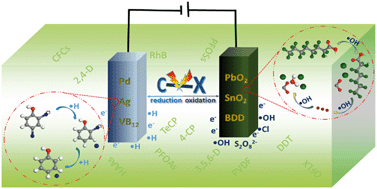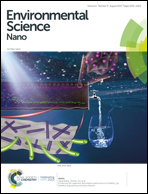Recent advances in electrocatalysts for halogenated organic pollutant degradation
Abstract
Electrocatalysis has recently been extensively employed for the degradation of halogenated organic pollutants (HOPs) that normally act as persistent, toxic, and bioaccumulative substances in the environment and pose threats to aquatic species as well as human beings. This review article broadly gives the up-to-date status on promising electrocatalysts for the degradation of HOPs, with particular emphasis on the strategies for promoting the activities of catalysts. Firstly, the catalysts for the oxidative mineralization process including metallic oxide- and carbon-based anodes, as well as the oxidative dehalogenation mechanism of these catalysts, are comprehensively presented. Secondly, the catalysts for the reductive degradation process, which involves metal- and metal complex-based cathodes, together with their applications and organic transformation pathways, are fully analyzed. Thirdly, recent advances in the integrated techniques are introduced, and the integration of membrane techniques, biological methods, Fenton processes, and photocatalysis with electrocatalysis is discussed. Finally, several key directions for further research are exploited, which include catalyst design, experimental optimization, scientific exploration, and effective coupling techniques.



 Please wait while we load your content...
Please wait while we load your content...